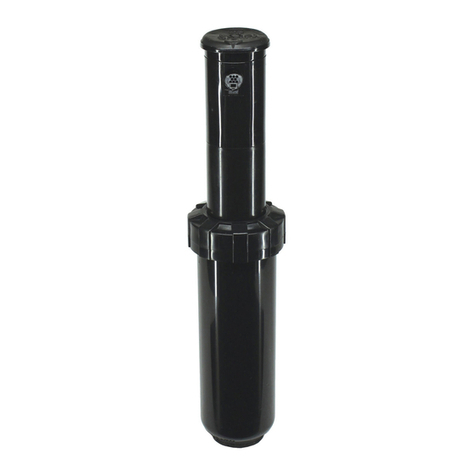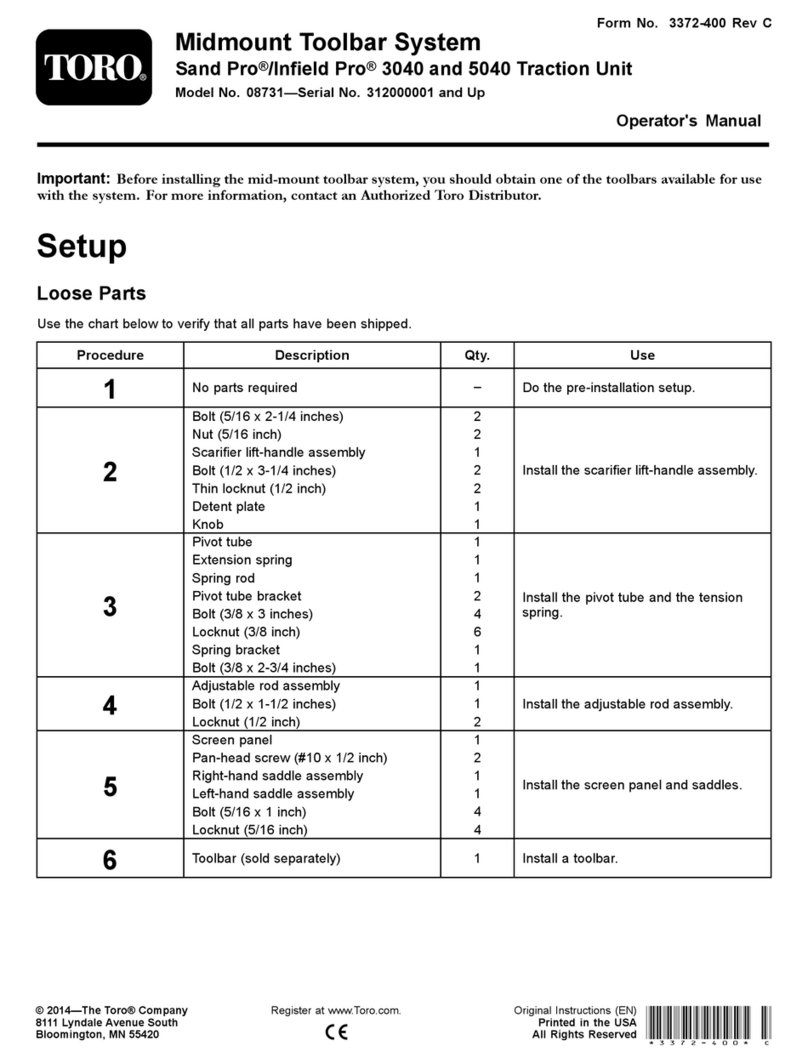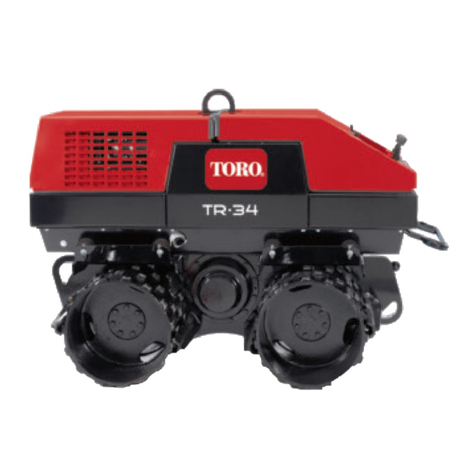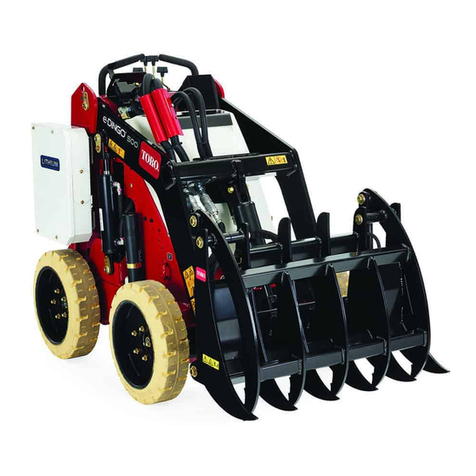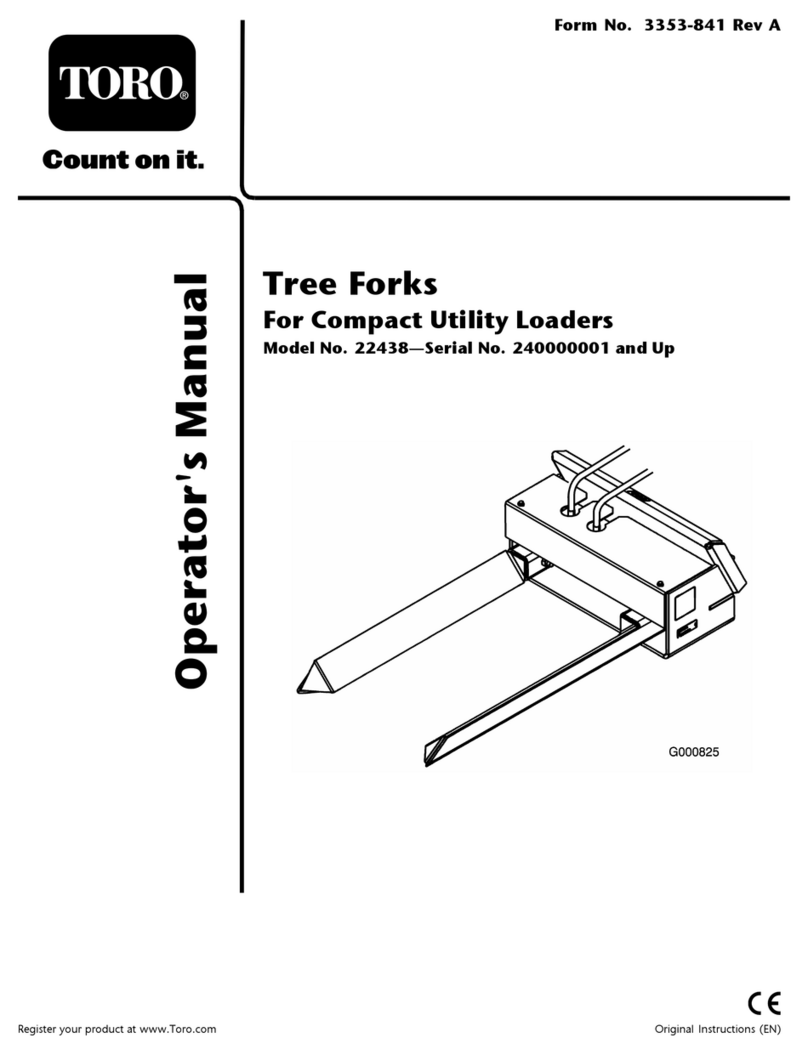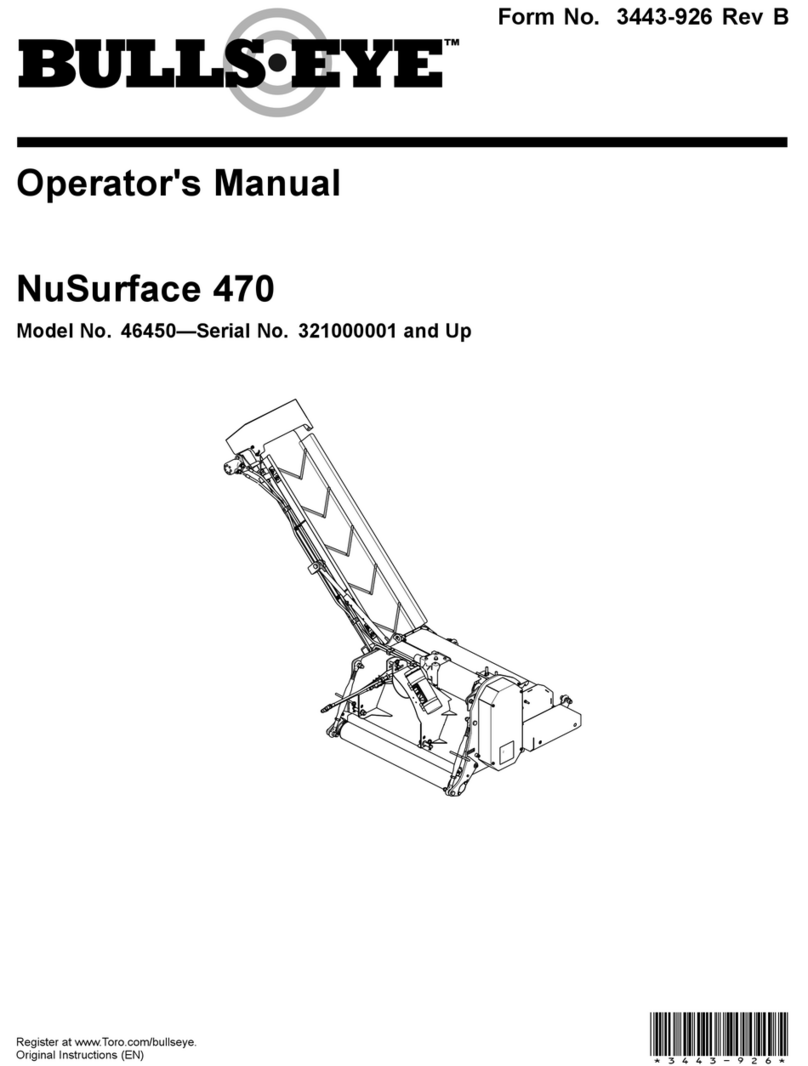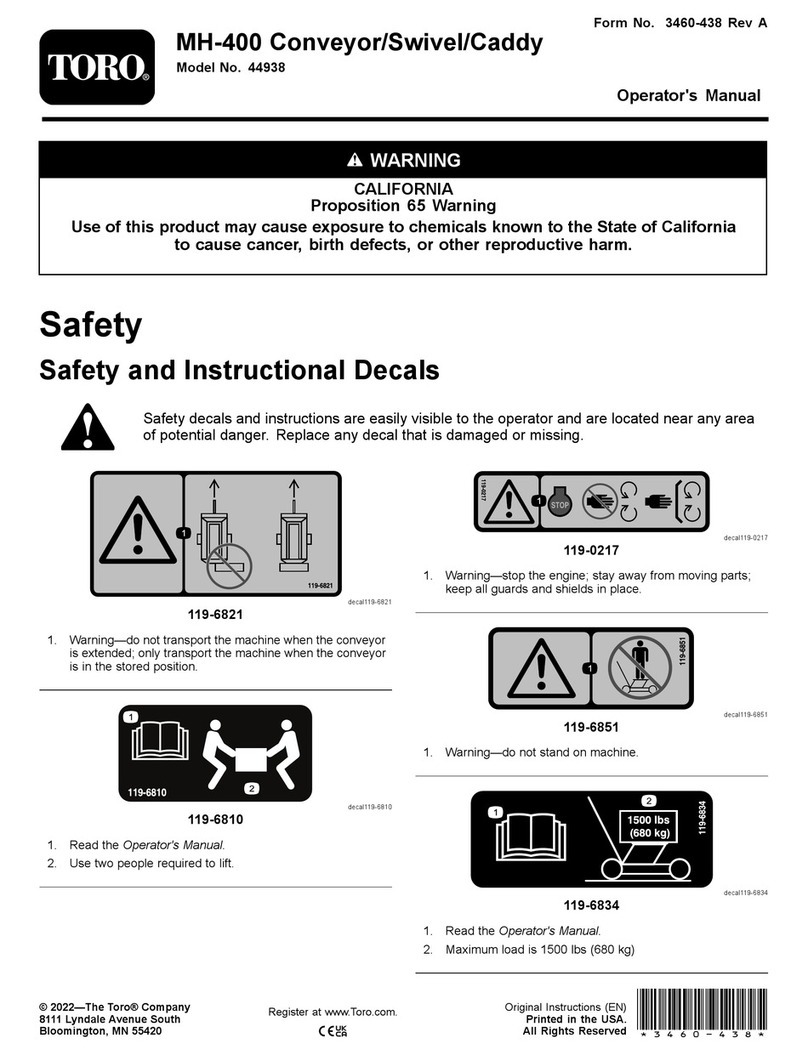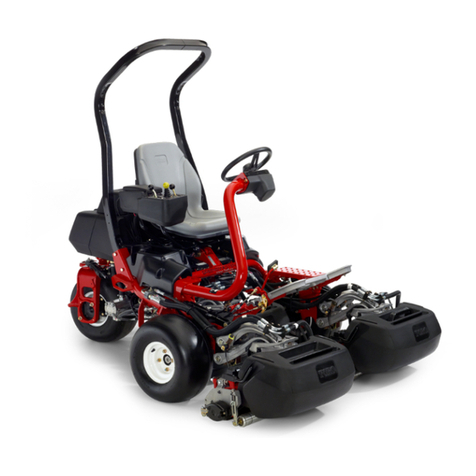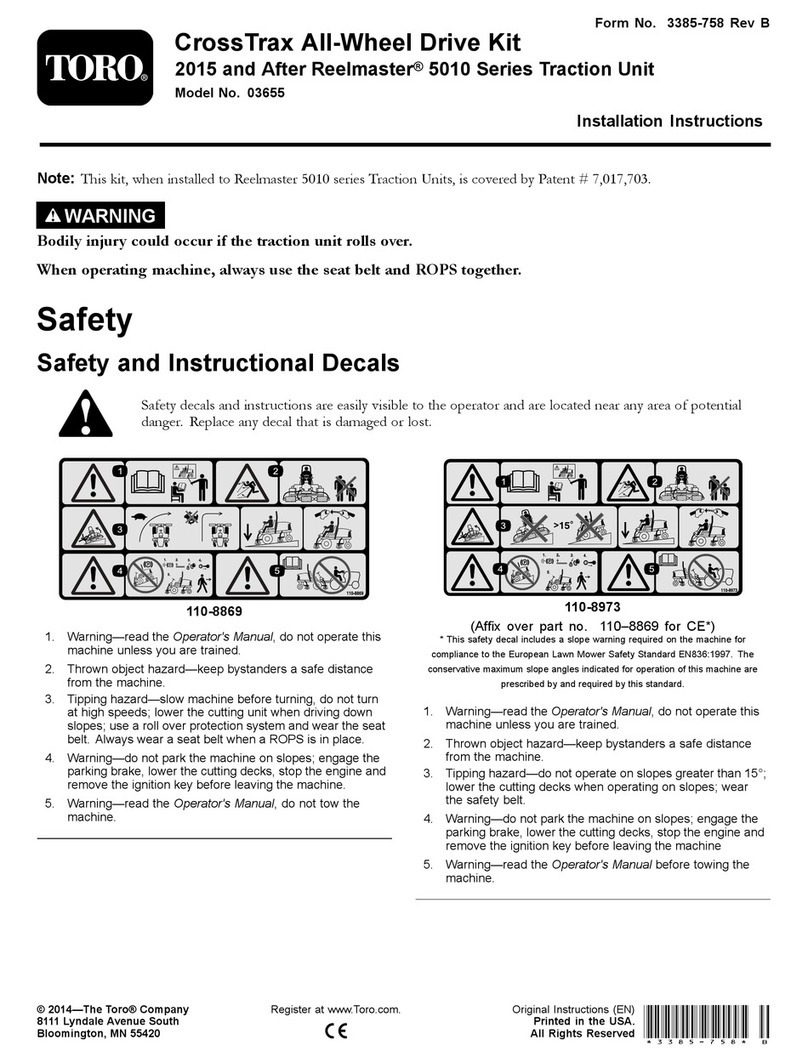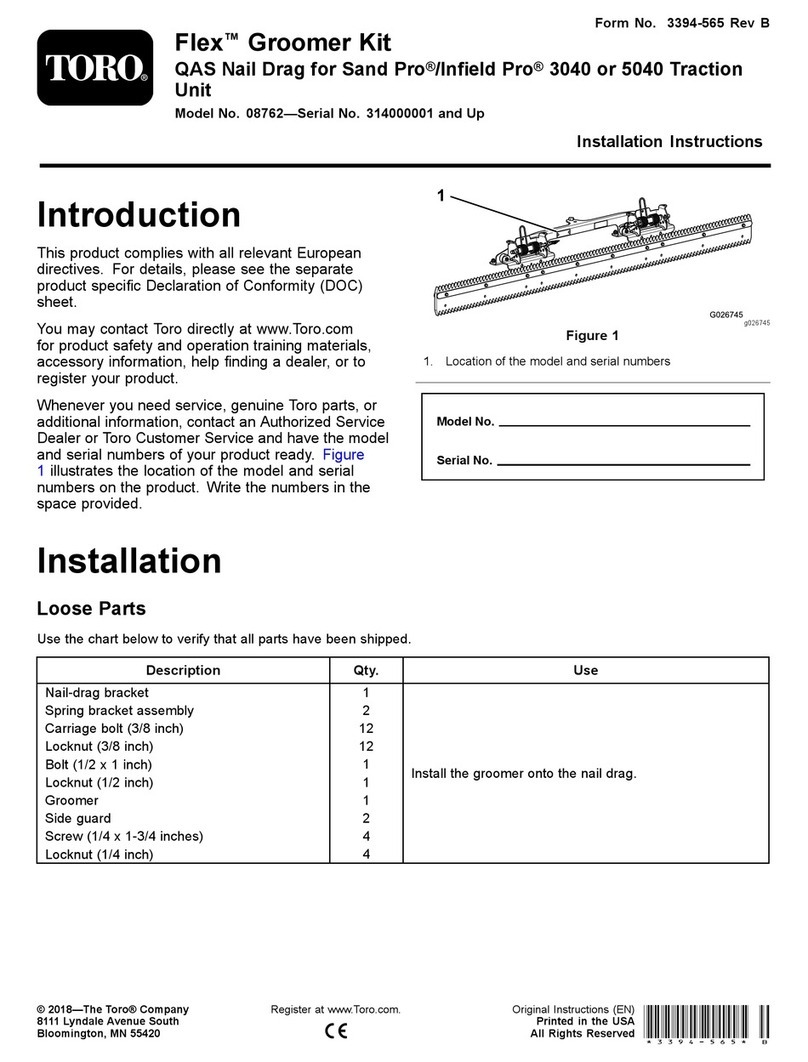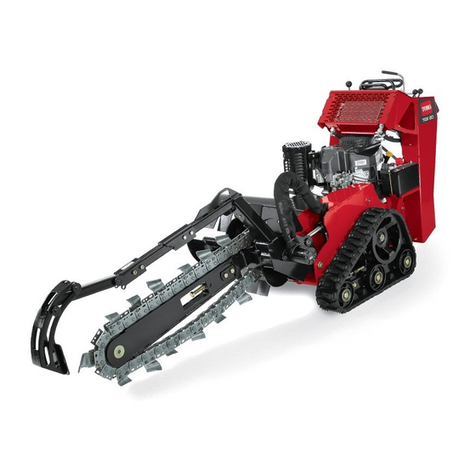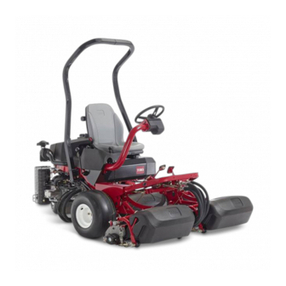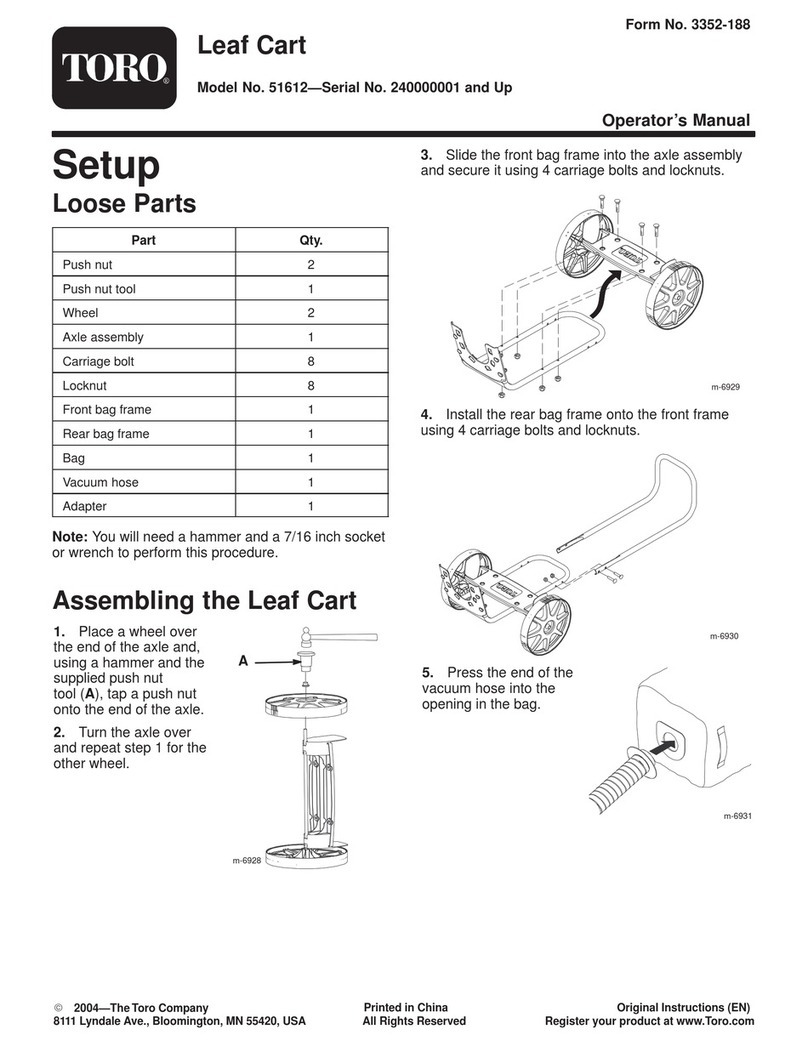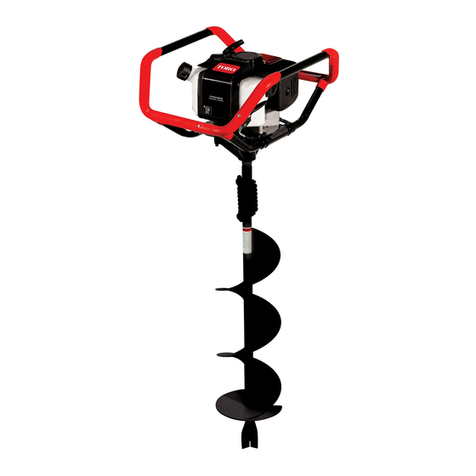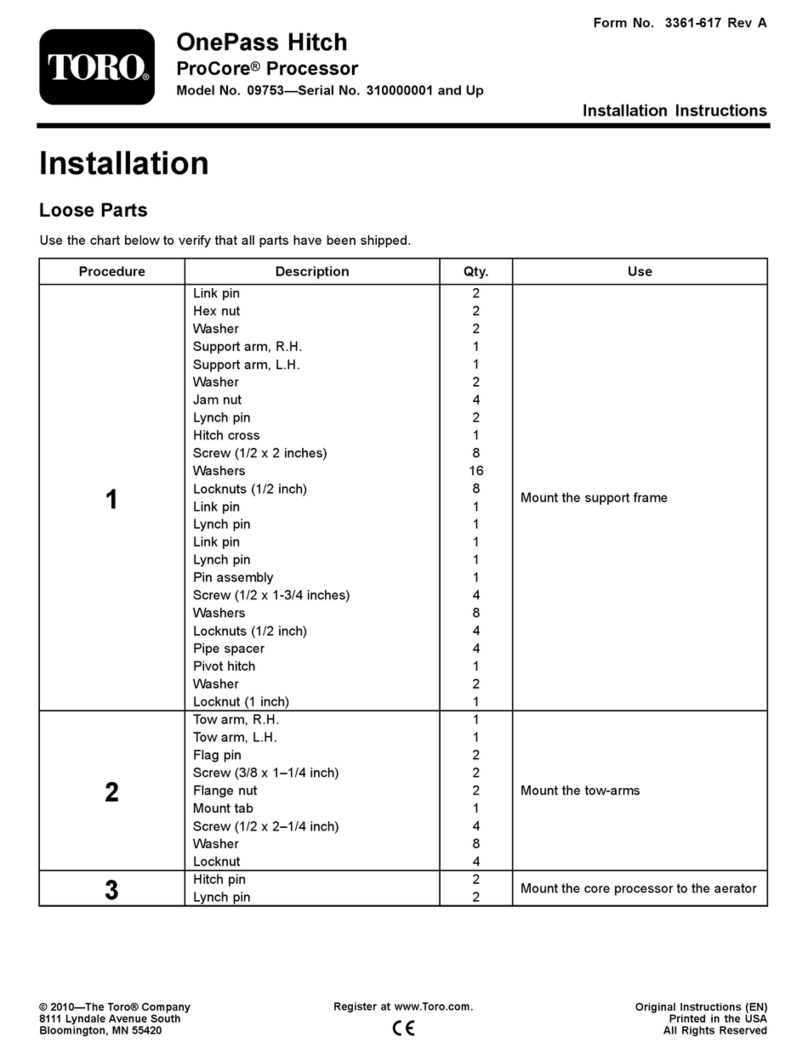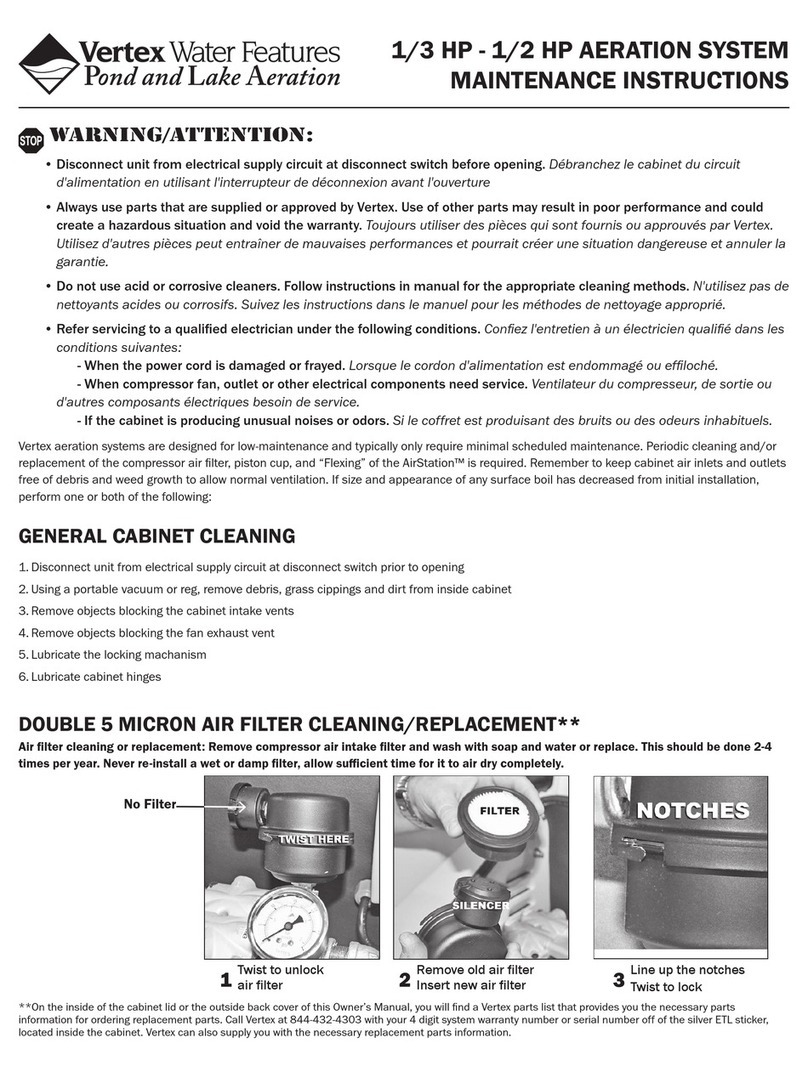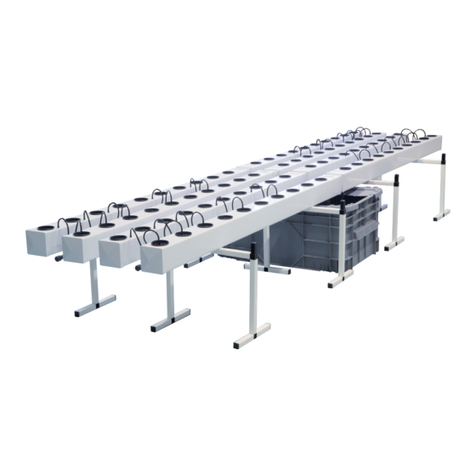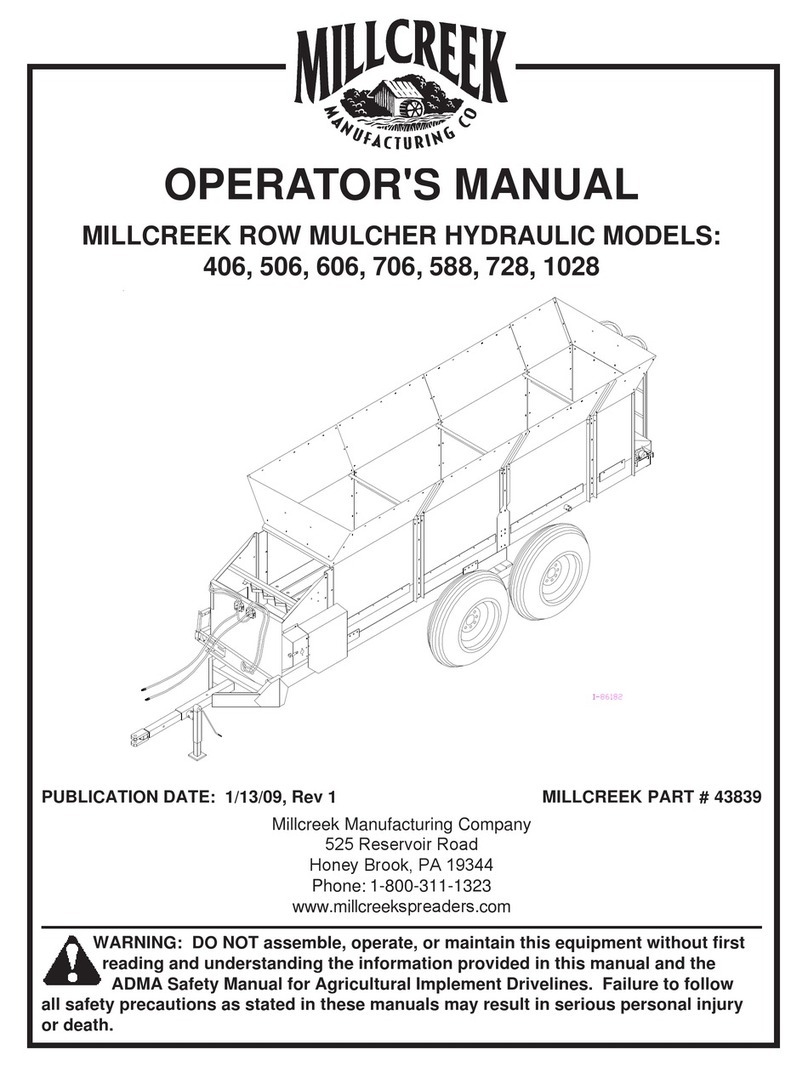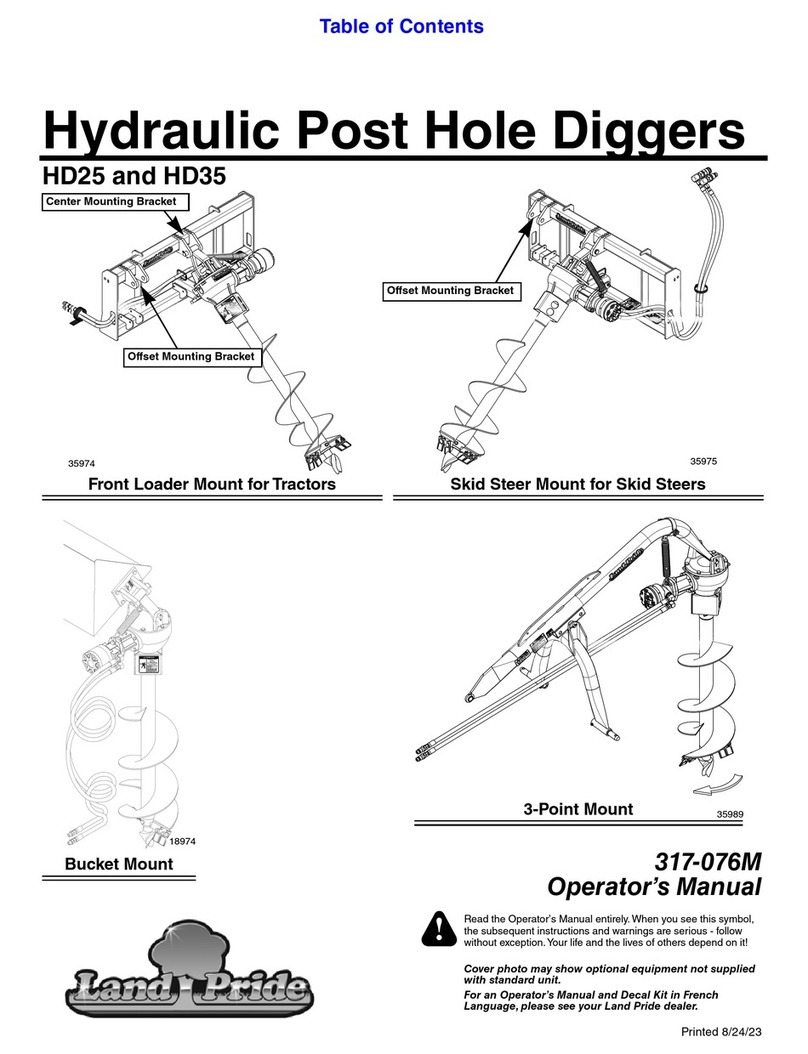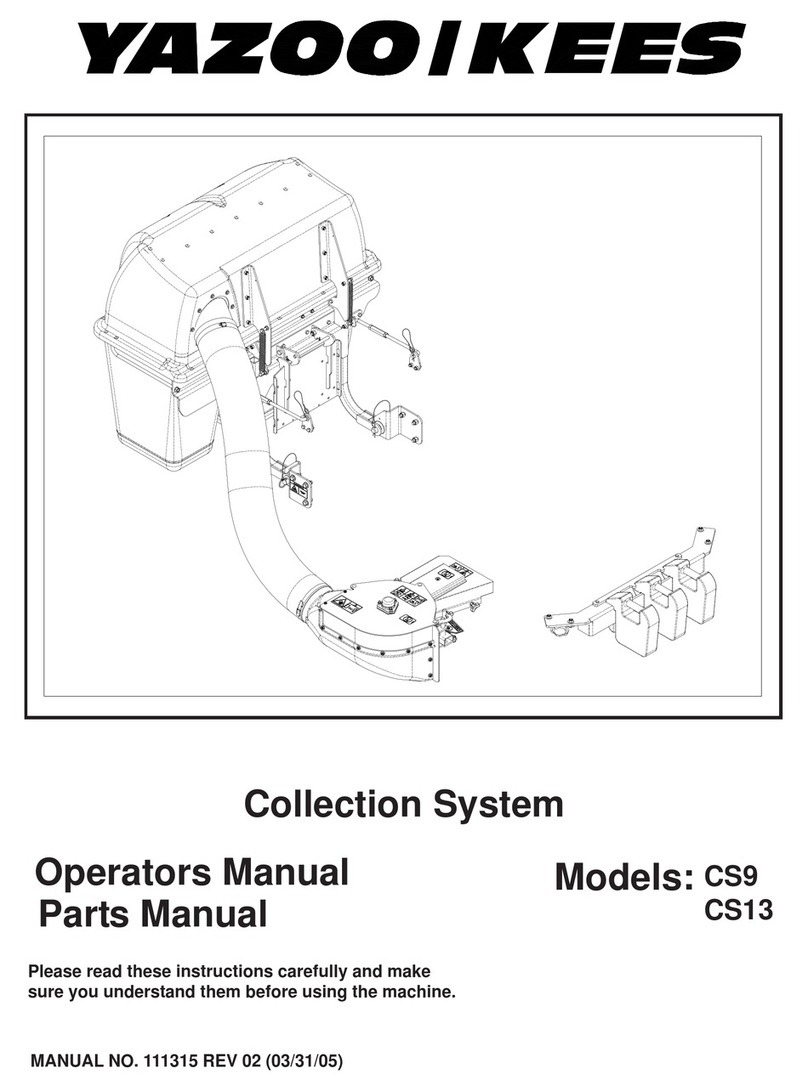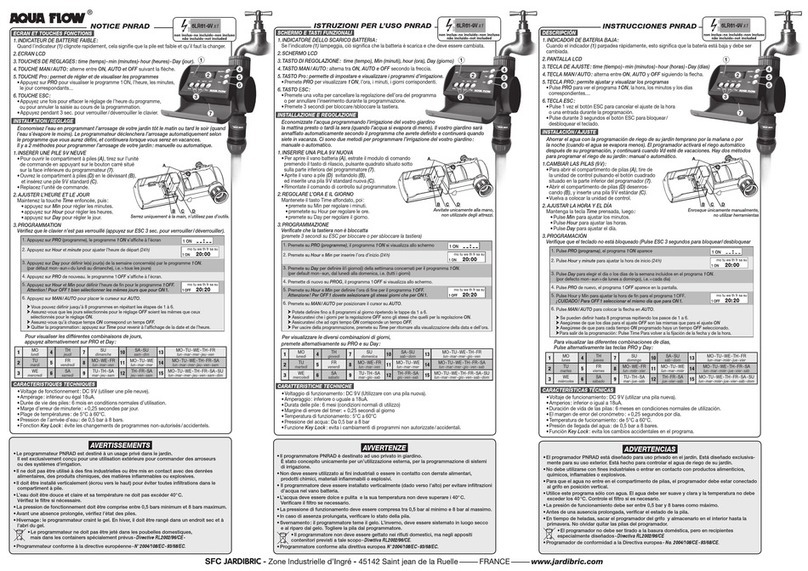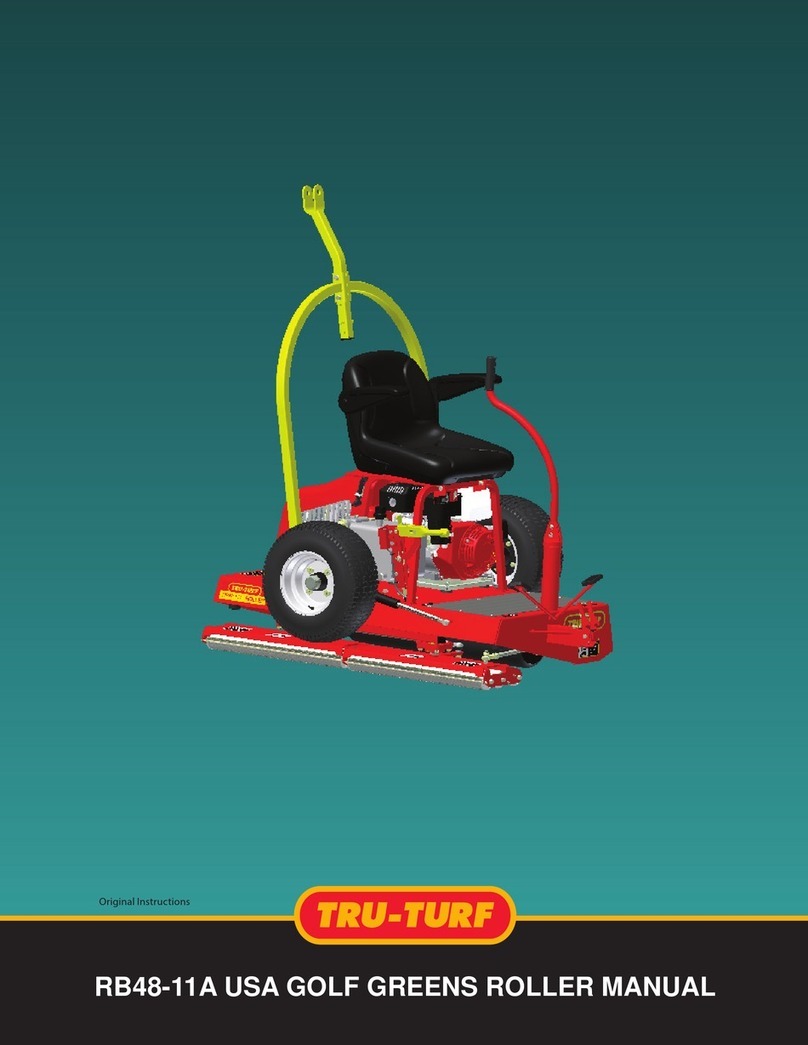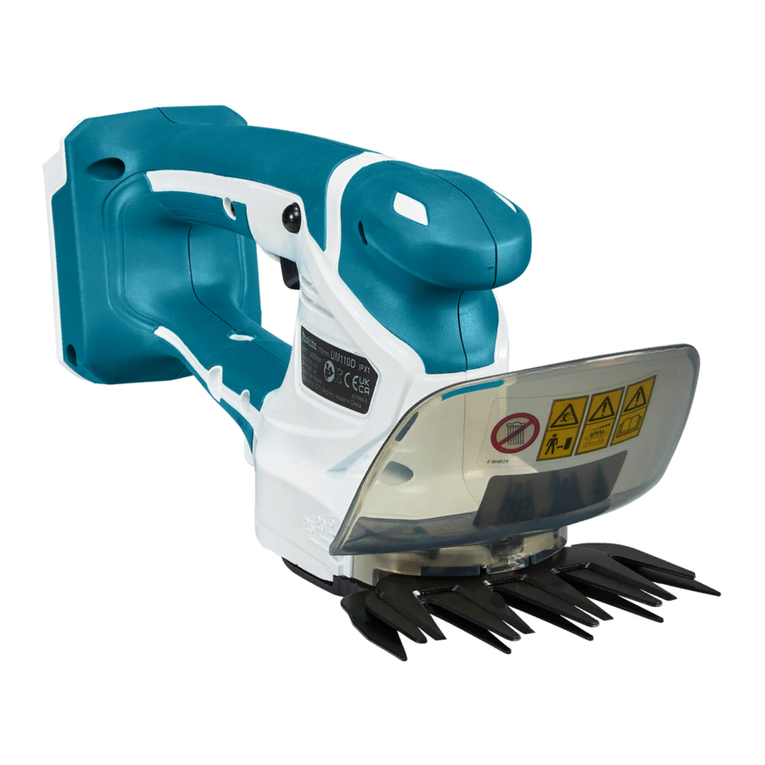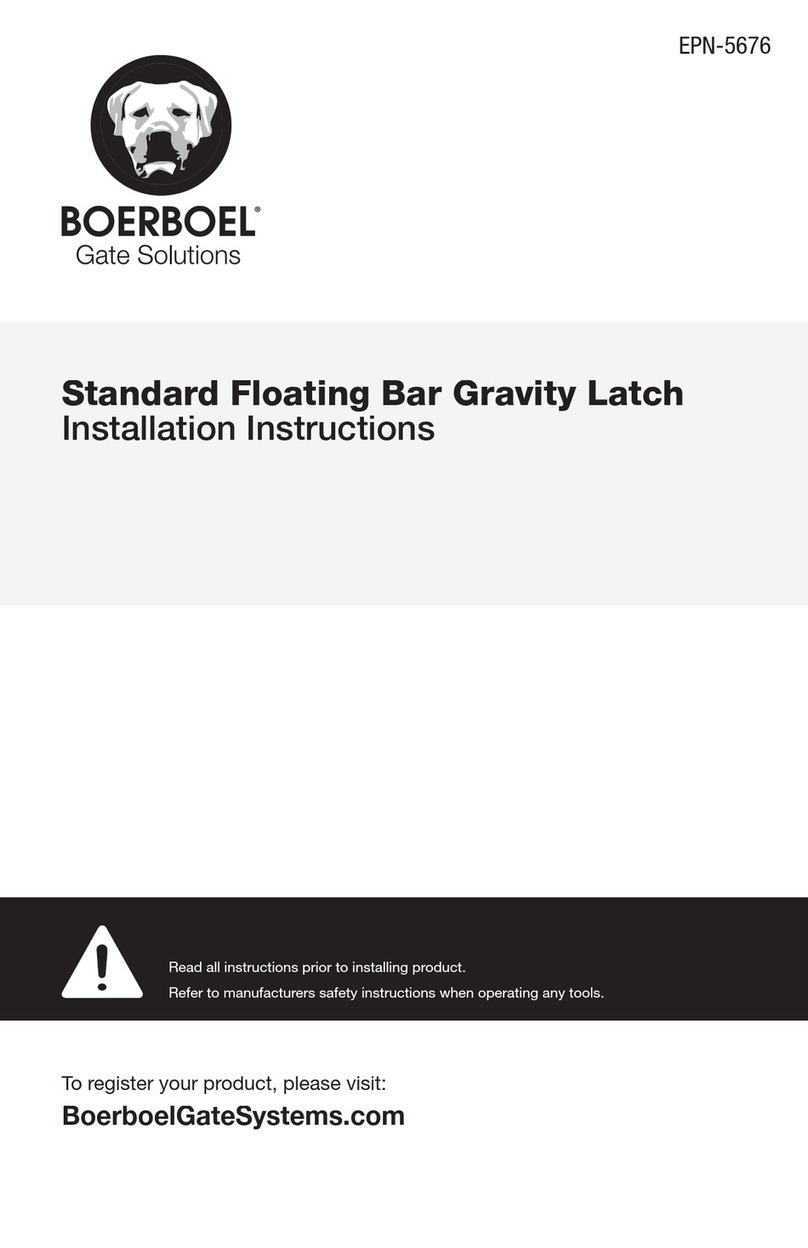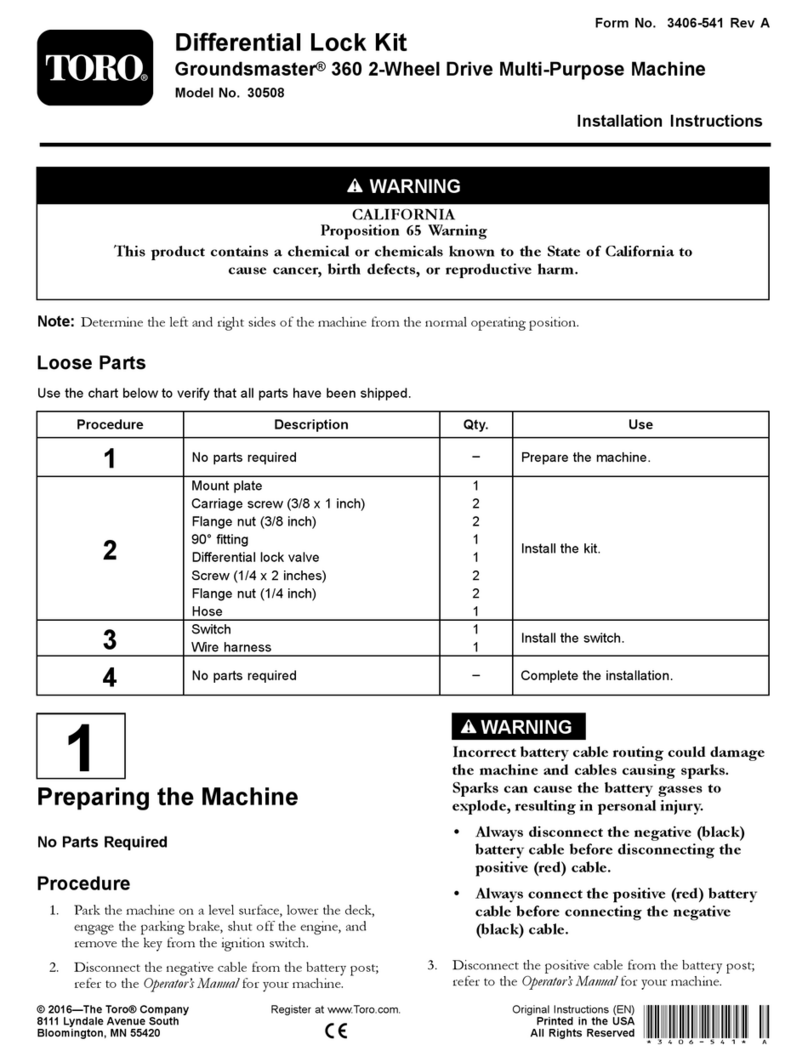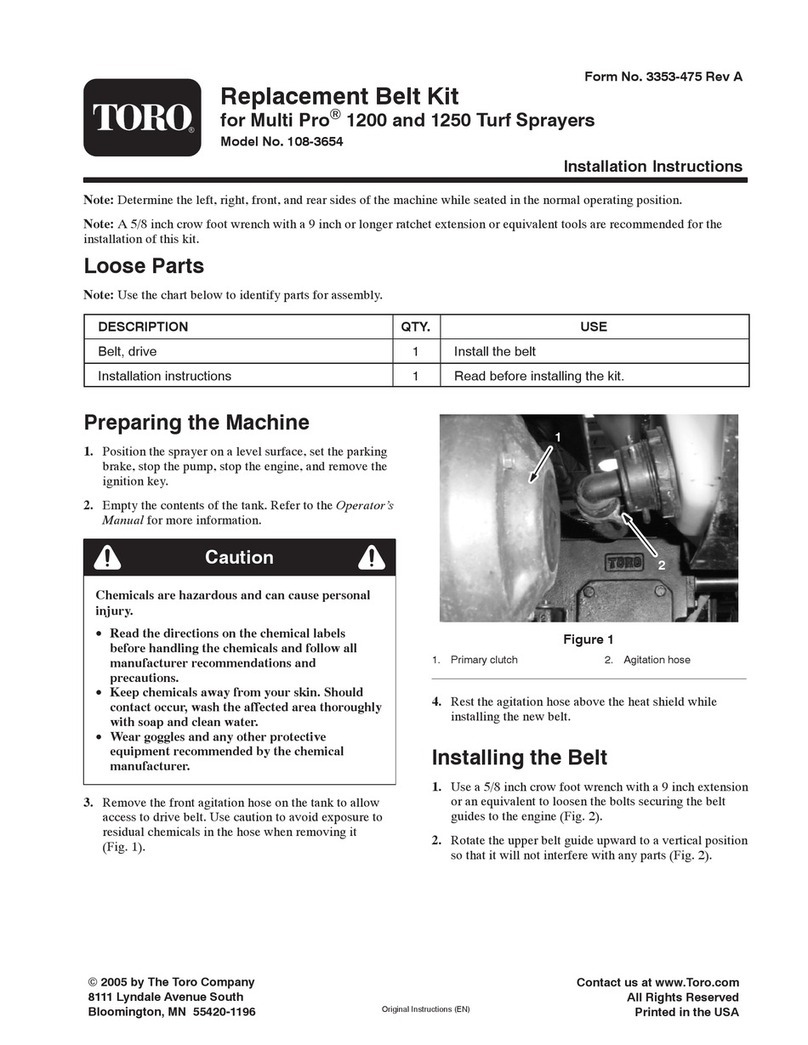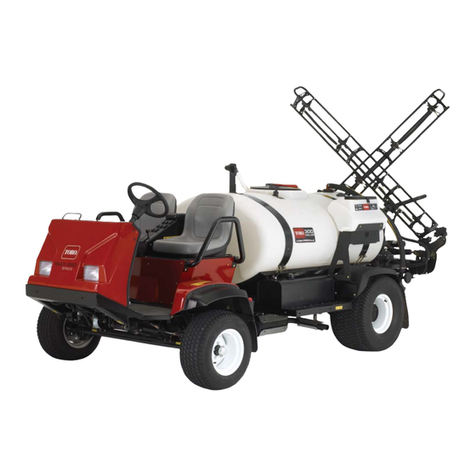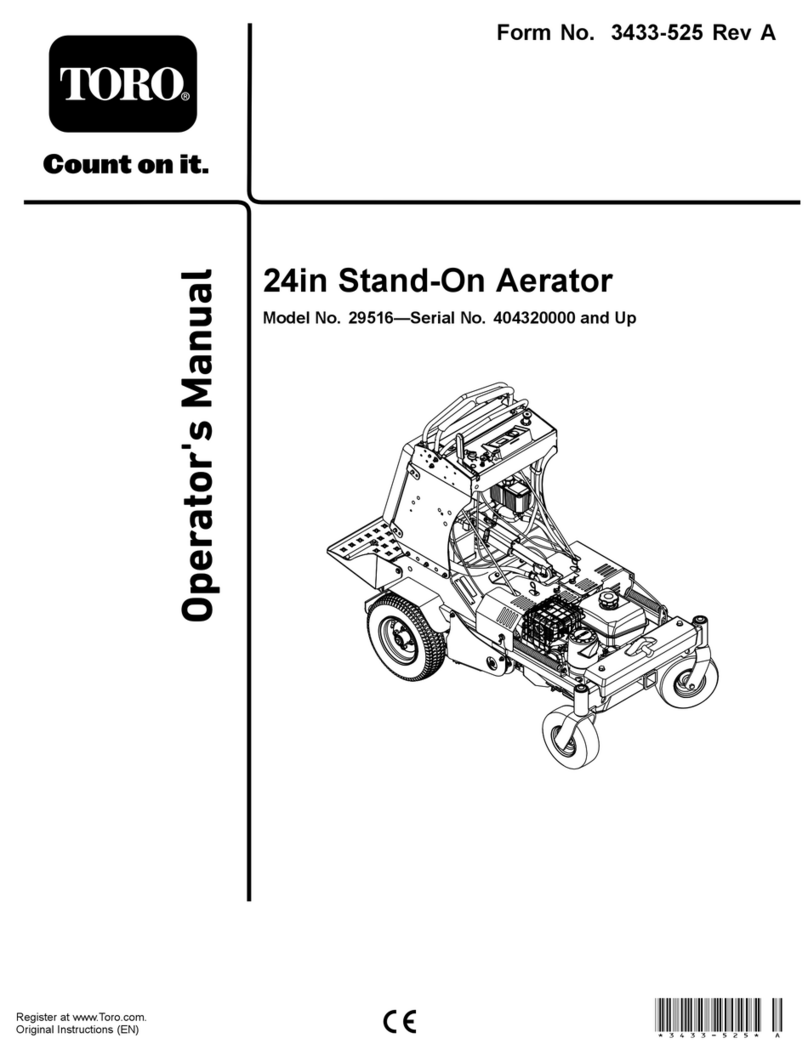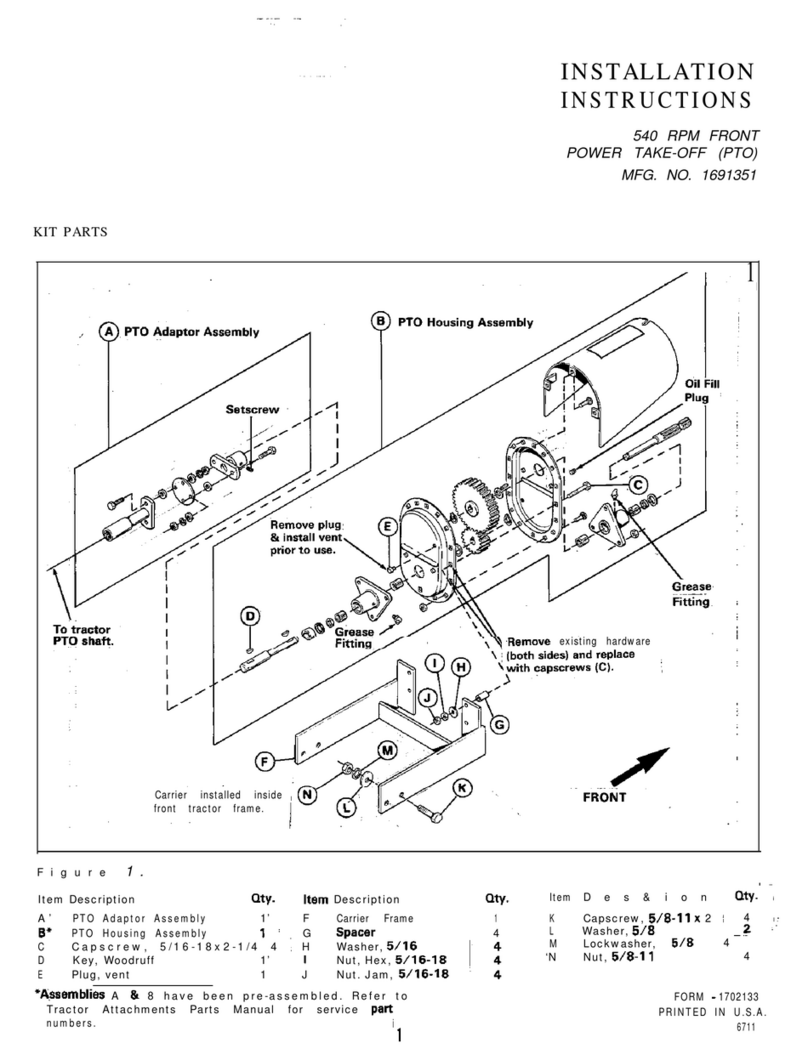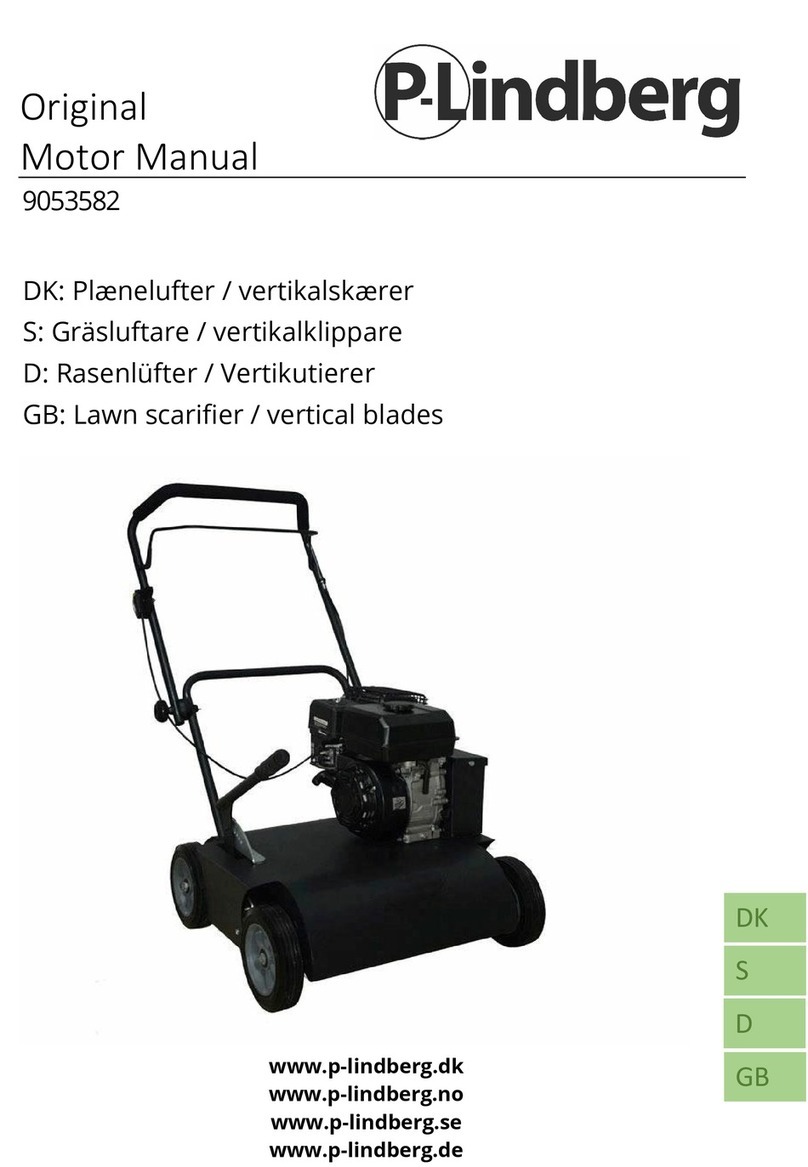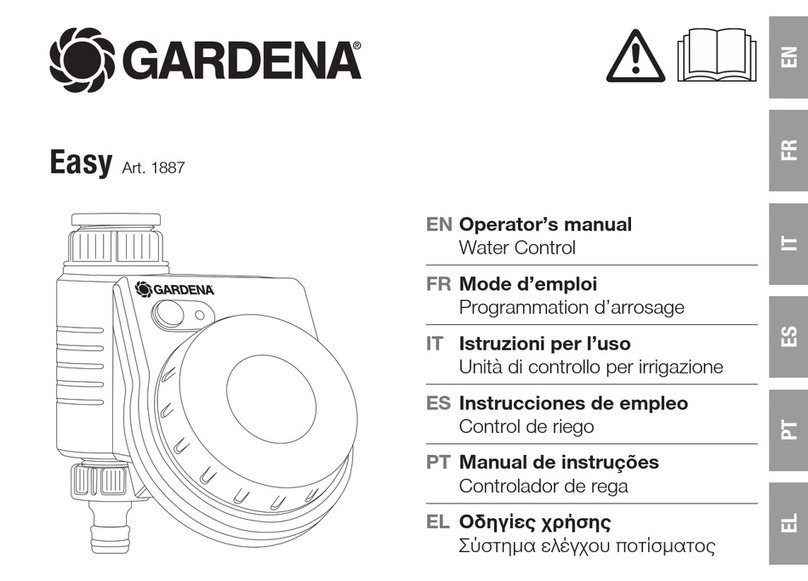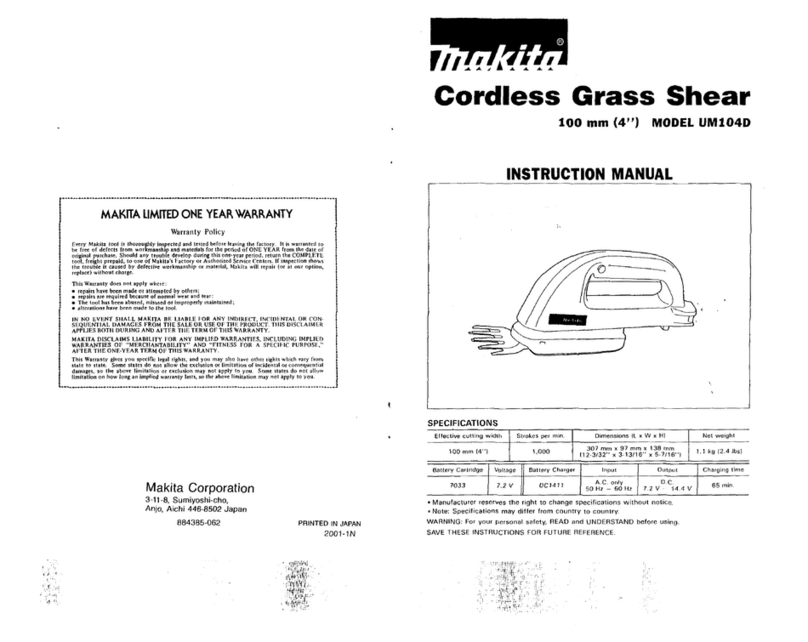
6
Training
•The operator must be skilled and trained in how to drive
on hillsides. Failure to use caution on slopes or hills
may cause the vehicle to tip or roll, possibly resulting in
personal injury or death.
Operation
•Know how to stop the machine and engine quickly.
•Do not operate the machine while wearing tennis shoes
or sneakers.
•Wearing safety shoes and long pants is advisable and
required by some local ordinances and insurance
regulations.
•Keep hands, feet, and clothing away from moving parts
and the mower discharge area.
•Fill fuel tank until level is 1 in. (25 mm) below the
bottom of the filler neck. Do not overfill.
•Check the safety interlock switches daily for proper
operation. If a switch should fail, replace the switch
before operating the machine. After every two years,
replace all interlock switches in the safety system,
regardless if they are working properly or not.
•When starting the engine, engage the parking brake, put
the traction pedal in neutral, and disengage the blade
drive. After the engine starts, release the parking brake
and keep your foot off of the traction pedal. The
machine must not move. If movement is evident, refer
to the Maintenance section of this manual to adjust the
traction drive.
•Use extreme caution when operating close to sand traps,
ditches, creeks, steep hillsides, or other hazards.
•Reduce speed when making sharp turns.
•Do not turn on hills.
•Do not operate on a side hill that is too steep. A rollover
may occur before losing traction.
•The slope angle at which the machine will tip is
dependent on many factors. Among these are mowing
conditions such as wet or undulating turn, speed
(especially in turns), position of the cutting units (with
the Sidewinder), tire pressure, and operator experience.
At side hill angles of 20 degrees or less, the risk of a
rollover is low. As the slope angle increases to a
recommended maximum limit of 25 degrees, the risk of
a rollover increases to a moderate level. Do not exceed
a 25 degree side hill slope angle because the risk of a
rollover and serious injury or death is very high. The
machine is equipped with an angle indicator mounted
on the steering tube. This indicates the side hill angle
the machine is on and identifies the recommended
maximum limit of 25 degrees.
•For steering control, the cutting units must be lowered
when going down slopes.
•Avoid sudden stops and starts.
•Use the reverse pedal for braking.
•Watch for traffic when near or crossing roads. Always
yield the right-of-way.
•Raise the cutting units when driving from one work
area to another.
•Do not touch the engine, muffler, exhaust pipe, or
hydraulic tank while the engine is running or soon after
it has stopped because these areas could be hot enough
to cause burns.
Maintenance and Storage
•Before servicing or making adjustments, stop the engine
and remove the ignition key.
•Ensure that the entire machine is properly maintained
and in good operating condition. Frequently check all
nuts, bolts, screws, and hydraulic fittings.
•Make sure all hydraulic line connectors are tight and all
hydraulic hoses and lines are in good condition before
applying pressure to the system.
•Keep your body and hands away from pin hole leaks or
nozzles that eject hydraulic fluid under high pressure.
Use paper or cardboard, not your hands, to search for
leaks. Hydraulic fluid escaping under pressure can have
sufficient force to penetrate the skin and cause serious
injury. If fluid is injected into the skin it must be
surgically removed within a few hours by a doctor
familiar with this form of injury or gangrene may result.
•Before disconnecting or performing any work on the
hydraulic system, all pressure in the system must be
relieved by stopping the engine and lowering the cutting
units to the ground.
•If the engine must be running to perform a maintenance
adjustment, keep hands, feet, clothing, and any parts of
the body away from the cutting units, attachments, and
any moving parts. Keep everyone away.
•Do not overspeed the engine by changing governor
settings. To ensure safety and accuracy, have an
Authorized Toro Distributor check the maximum engine
speed with a tachometer.
•The engine must be shut off before checking the oil or
adding oil to the crankcase.
•If major repairs are ever needed or if assistance is
desired, contact an Authorized Toro Distributor.
•To make sure of optimum performance and continued
safety certification of the machine, use only genuine
Toro replacement parts and accessories. Replacement
